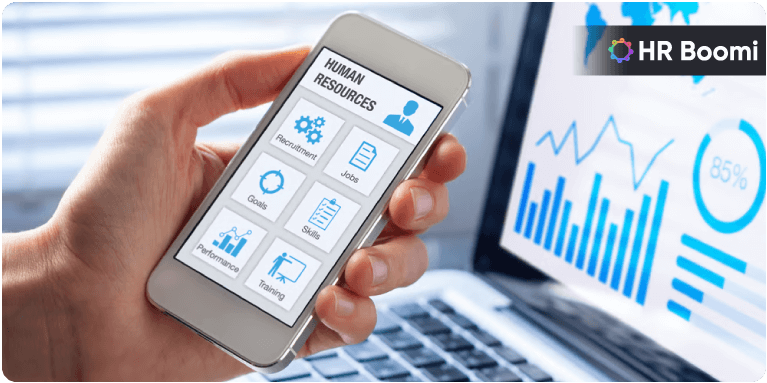
Table of Contents
Human Resource Management (HRM) has undergone significant changes and transformations over the years. From its early administrative role to the modern digital era, HRM has evolved to meet the ever-changing needs of organizations and employees. The field of Human Resource Management plays a critical role in organizations by managing and developing the most valuable asset: human capital. Throughout history, HRM has adapted and evolved in response to societal, technological, and economic changes. Let’s delve into the generations of HRM and trace its journey from administrative functions to strategic decision-making.
Types of the Evolution of HRM
Here are the types of the evolution of HRM:
1. Administrative HRM
The early days of HRM were characterized by administrative tasks such as payroll management, record-keeping, and compliance with labor laws. During this era, HR departments focused on maintaining employee records and ensuring legal compliance. The primary goal was to handle routine personnel activities efficiently.
2. Behavioral HRM
As organizations recognized the significance of employee well-being and productivity, HRM evolved to incorporate behavioral sciences. This generation emphasized employee motivation, job satisfaction, and performance management. Human relations theories and practices gained prominence, emphasizing the importance of employee engagement and fostering positive work environments.
3. Strategic HRM
The emergence of strategic HRM marked a paradigm shift in the field. HR professionals became strategic partners, aligning HR practices with organizational goals. Strategic HRM focused on talent acquisition, development, and retention to gain a competitive advantage. HR leaders actively contributed to strategic decision-making and contributed to long-term organizational success.
4. International HRM
As globalization expanded business boundaries, HRM adapted to the challenges of managing a diverse workforce across borders. International HRM addressed the complexities of hiring, training, and managing employees from different cultures and backgrounds. It involved developing global HR policies, ensuring compliance with international laws, and fostering cross-cultural understanding.
5. Digital HRM
With the advent of technology, HRM entered the digital age. Digital HRM leverages automation, data analytics, and cloud-based platforms to streamline HR processes and enhance decision-making. It includes HRIS (Human Resource Information Systems), e-recruitment, online training, and performance management tools. Digital HRM improves efficiency, data accuracy, and employee experience.
Generations of HRM
Evolution of HRM During The Industrial Revolution
The Industrial Revolution played a pivotal role in shaping HRM practices. It marked a shift from agrarian economies to industrialized societies, leading to the rise of factories and mass production. During this period, HRM primarily focused on labor management, ensuring workforce productivity, and maintaining a disciplined work environment. HR departments were responsible for workforce planning, task allocation, time studies, and standardization of processes.
Evolution of HRM During the Period of Trade Union
The emergence of trade unions brought about significant changes in HRM. Workers started to organize themselves to protect their rights and negotiate with employers. HRM adapted to address the concerns of employee welfare, fair wages, working conditions, and collective bargaining. The role of HR expanded to include labor relations, conflict resolution, and ensuring compliance with labor laws.
Evolution of HRM Through Social Responsibilities
As society became more aware of social issues, HRM embraced the concept of social responsibility. Organizations recognized the importance of ethical practices, diversity and inclusion, and environmental sustainability. HRM played a vital role in developing corporate social responsibility strategies, promoting workplace diversity, and implementing sustainable business practices.
Growth and Evolution of HRM Through Scientific Management
Scientific management, pioneered by Frederick Taylor, had a profound impact on HRM. This approach emphasized systematic task planning, time studies, standardization of work processes, and wages based on productivity. HRM adopted scientific methods to improve efficiency and productivity, resulting in better workforce management practices. Here are a few features of HRM that came out from scientific management.
Task Planning
Scientific management emphasized breaking down complex tasks into smaller, manageable components. HRM played a crucial role in analyzing work processes, identifying bottlenecks, and optimizing task allocation for maximum productivity.
Time Study
By conducting time studies, HRM professionals gained insights into the time required to complete specific tasks. This data helped in establishing realistic work standards and enhancing workforce productivity.
Standardization
Standardization of work processes enabled organizations to achieve consistency and efficiency in their operations. HRM professionals worked closely with operations teams to develop standardized procedures and best practices.
Wages Based on Productivity
Scientific payment methods for employees have challenged traditional ones and advocated for wages tied to productivity. HRM played a key role in implementing performance-based pay systems, incentivizing employees to increase their productivity levels.
Conclusion
The evolution of Human Resource Management has been transformative, shifting from a transactional function to a strategic driver of organizational success. From its origins in employee welfare to its current focus on aligning HR strategies with business objectives, HRM has played a crucial role in shaping modern workplaces. As organizations continue to navigate the complexities of a dynamic business environment, HRM will remain at the forefront, adapting to emerging trends and championing the well-being and development of their most valuable asset: the human capital.
FAQs
What are the primary responsibilities of HRM?
Human Resource Management encompasses various responsibilities, including recruitment, employee training and development, performance management, compensation and benefits administration, employee relations, and HR strategy formulation.
How has technology impacted HRM?
Technology has revolutionized HRM by automating processes, enabling data-driven decision-making, facilitating remote work, and enhancing employee engagement through tools such as HRIS, data analytics, collaboration software, and virtual communication platforms.
What is the role of HRM in promoting diversity and inclusion?
HRM plays a vital role in fostering diverse and inclusive workplaces. It involves implementing policies and practices that promote equal opportunities, combating biases in recruitment and selection, providing diversity training, and fostering an inclusive organizational culture.
How can HRM contribute to organizational success?
HRM contributes to organizational success by aligning HR strategies with business objectives, attracting and retaining top talent, developing employee skills, promoting employee engagement and well-being, and ensuring compliance with labor laws and regulations.
What are some emerging trends in HRM?
Emerging trends in HRM include the integration of AI and automation, workforce agility, employee well-being initiatives, and managing remote and hybrid workforces effectively.
Recent Posts
-

In-house vs. Outsourced Payroll: Pros and Cons
-

Mastering Talent Retention: A Corporate Challenge
-

What is employer branding and how to apply it in your company?
-

The Significance of Employee Communication Within
-

What is time management and why is it important?
-

Net salary: what is it and how is it calculated?
-

Enhancing Employee Experience: Strategies for Excellence
-

10 Best Gifts to Boost Sales Channels
